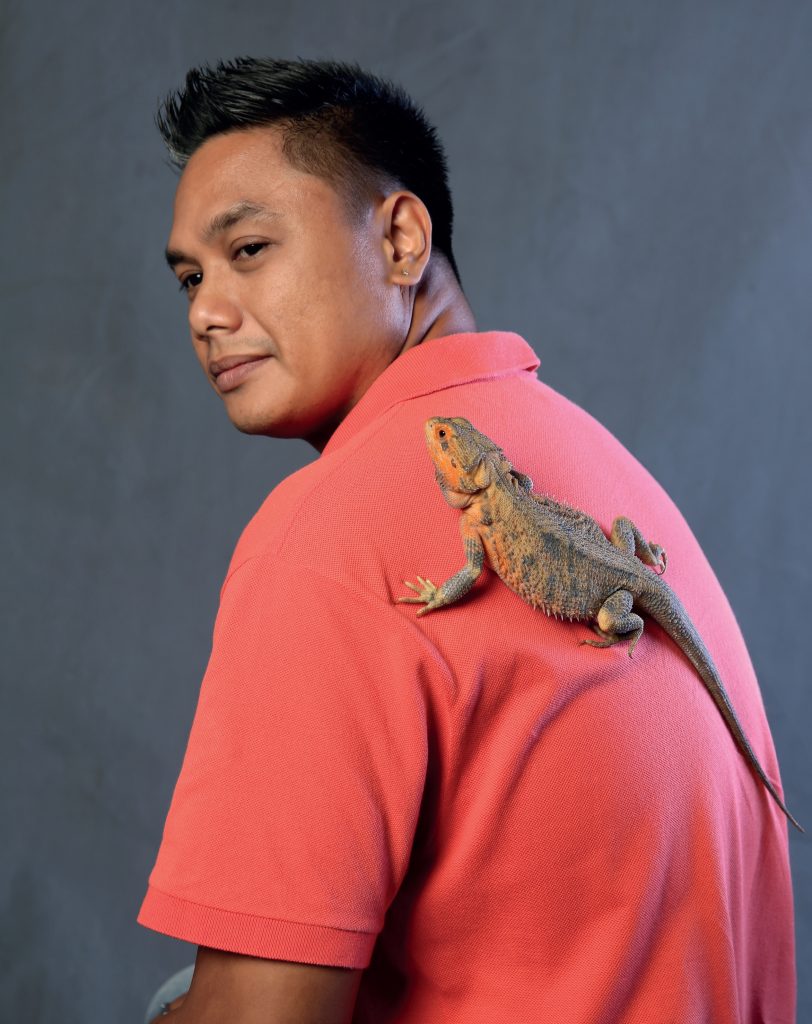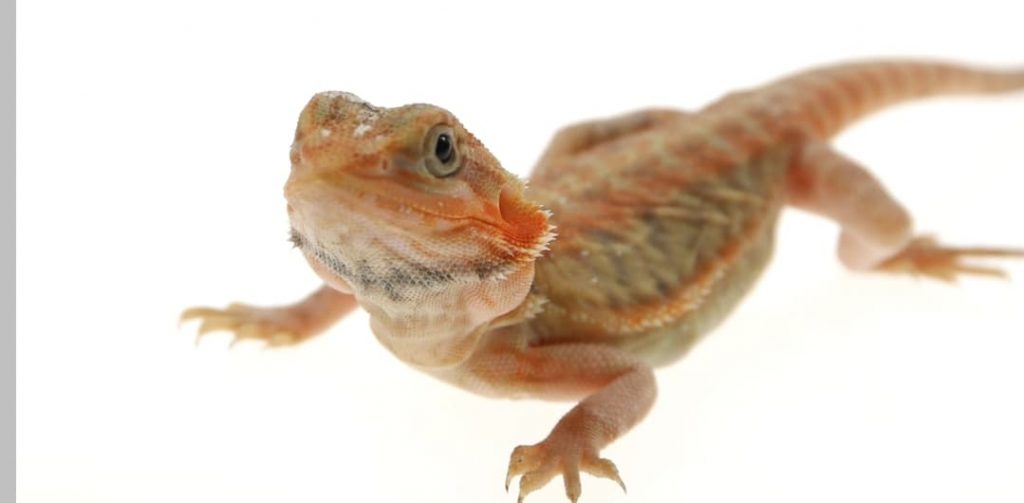Ever had lizards at home when you were a kid? Those that have Spiderman-like abilities to stick to a dingy wall with long tongues that catch insects? Imagine if you had one right now, only twenty times bigger. And oh, add a spiky, funky beard.
Bearded dragons are friendly reptiles who are considered companions at home. They may not be your typical furry playmate, don’t know how to play catch, or don’t go nuts at the sight of a ball of yarn, but they are as sweet and loyal as any canine or feline.
While most people prefer having someone who did not come from the wild, choosing Bearded Dragons as animal companions are not as weird as you think.
Beating the heat
Bearded Dragons are believed to have originated in inland Australia and have thrived in woodland areas and drier habitats such as deserts. They were only discovered recently and have only been introduced to the United States in the late 90s.

Scientifically named Pogona vitticeps, these giant lizards like to spend their days chilling. In fact, they have been called the “King of Chill” due to their docile behavior and because they pretty much do nothing, except for eating insects and basking under the sun.
Beloved beardies Mickey and Minnie
In the Philippines, Bearded Dragons are among the top exotic animals to be considered animal companions. Some reptiles such as the gecko, snake, crocodile, and even the homely turtle have gained a reputation as home companions. Even so, Bearded Dragons are unique in their own way.
Luckily, we met someone living with two Bearded Dragons named Mickey and Minnie. And yes, they are as adorable as their given names!
1.Personality
Though scary-looking to some, Bearded Dragons are actually calm and gentle creatures. They are friendly and can stay near children. Some guardians would even attest to dressing up their Bearded Dragons without a fuss.
However, Bearded Dragons can be territorial and will try to fend off potential enemies from occupying their space. If threatened, they flatten their bodies, open their mouths, and unleash the beard to appear bigger. They also resort to scratching and biting if not handled properly, just like any animal companion.

According to our source, Mickey and Minnie are unique because of their loyalty to each other. “I tried to match them with other Bearded Dragons [under my care], but they refused to. I guess they just prefer each other.” While it is known that Bearded Dragons are not choosy with their partners, it is nice to think that Mickey and Minnie actually like each other the same way lobsters and penguins mate for life.
While that is a sweet occurrence, Bearded Dragons are not so famous for their maternal instincts. Guardians are advised to separate the eggs from the mother before they hatch because the mother will not recognize her own offspring and may very well eat them, especially in a domestic environment. Just like other animals such as cats, Bearded Dragons have the tendency to eat their young.
Minnie and Mickey’s human parent has been taking care of them for five years since he took them home in 2011.
And while they had been under his care for quite some time, he found it difficult to communicate with them. “The tricky part is I don’t know what they’re thinking most of the time,” he said.
“They are pretty much low maintenance, so I make it my duty to observe them daily and see if something’s off [with] their normal routine, like appetite and mood.”
2. Physical appearance
The Bearded Dragons got their name from the spiky skin found on their chin that goes down to their necks, giving the appearance of a beard. They are then nicknamed “Beardies”.

These spikes are also found on their head, back, and tail. Of course, this beard does not only look fancy but has an actual function: when the lizard expands its beard, it makes them look larger, scaring off potential predators. These beards also change color to regulate temperature, and also to communicate a certain mood.
Bearded Dragons are really just giant lizards with a kind face. Males typically grow up to 22 inches and are larger than females. Most Bearded Dragons’ colors range from yellow to tan and their tails are usually as long as their bodies.
Some Bearded Dragons can also produce a translucent morph, which is a rare occurrence. Mickey and Minnie are a perfect example of this. Translucent Bearded Dragons have jet-black eyes and white-looking, almost-see-through skin.
Grooming the beardies
Like any other creature, Bearded Dragons may have health problems. Luckily for Mickey and Minnie, they have yet to experience severe illness.
Let’s take a look at what they usually eat, where they sleep, and other elements that help maintain their well-being.

1.Diet
Bearded Dragons are omnivores, which means they thrive in diets consisting of both meat and plants. As for Mickey and Minnie, they eat mostly “crickets, super worms, and a side dish of veggies”.
Some say there must always be a serving of vegetables given to the feeders. Fruits, such as mangoes and strawberries, can also be fed to Bearded Dragons in tiny portions.
Supplements are needed to prevent disease. Calcium should be regularly given to Bearded Dragons to keep them from getting metabolic bone disease, which is contracted due to the lack of sunlight. Feeders can also be fed vitamin-rich foods before being given to the Dragon.
Guardians should also make sure that their Bearded Dragons consume the optimal amount of water, which is about two teaspoons only a day, depending on their body weight. Excessive water in the tank can cause additional humidity in the Dragons’ lair and may affect their skin.
2. Environment
Bearded Dragons thrive better in warm habitats, but this doesn’t mean that they should stay in it. Excess exposure to heat can lead to skin and health problems, which is why every Bearded Dragon guardian must be responsible for providing a safe haven for these gentle, albeit arguably mythical, creatures.
“Adult Bearded Dragons should live in a terrarium with a [temperature] of 90-93 degrees Fahrenheit, and for juveniles and babies, only 80 to 90 degrees Fahrenheit,” advised our source.
Some guardians use a UV lamp approximately as long as a ruler that omits heat onto a fraction of the Dragons’ body. Exposing them to colder temperatures might result in arthritis-like symptoms such as leg tenderness.
Cages should also be wide enough for these Dragons since they like to bask and hide. It is important to regulate the temperature inside their terrarium: Some areas should not be as warm as the rest of the enclosure.
The right plants can aid in controlling humidity. Having rocks branches inside the terrarium for the Dragons to climb on can make their man-made home not just aesthetically pleasing but also functional. The cage must be sealed and easy to clean.
It is essential to keep their cages clean. It is where they eat, sleep, and poop. While it is recommended to mimic the natural habitat of Bearded Dragons in the wild, it is also important to make sure their home in a domestic setting is not a breeding ground for diseases, such as Salmonella and yellow fungus.
Yellow fungus is the most common enemy of the domesticated Dragon. “It is like cancer for them… if you happen to see signs of yellow fungus on your Bearded Dragon, that is very dangerous,” says our source.
Cleaning your Dragons’ cage regularly as well as their food and water container greatly diminishes the chances of disease spreading.
3. Other needs
Allow them to bask in the sun. Thirty minutes out in the sun in the recommended time allows them to get their much-needed Vitamin D. Not everything can be sourced from supplemental vitamins, which is why it is important for Bearded Dragons to be allowed to walk outside their homes, even just for a few minutes. This will also give the guardian ample time to tidy up the Dragons’ lair.
Allow for socialization. Bearded Dragons are said to be deeply social creatures, which is why it is important for them to interact with other Bearded Dragons and maybe other animal companions in your home. They can also be quite playful.
Meanwhile, avoid keeping two male Dragons in one terrarium as they can be very territorial and will surely fight for space.
Vital tips for bearded dragon guardians
1.Remove excess feeders
Crickets, worms, and even cockroaches can hurt your Dragon if they are not cleaned up after feeding time. These feeders can also feed on your Dragon if they are left in the cage, which will not only irritate the skin of your Dragon but also cause infection, such as yellow fungus.
The trick, says our source, is to leave extra vegetables in the enclosure, which the feeders will munch on while the Dragon is sleeping. An even smarter approach is to have a separate area for the meat feed so that no feeders can proliferate in your Dragon’s tank.
2. Be wary of breeding
Irresponsible breeding can result in a deformed morph or, worse, a dead lizard. As a good guardian, make sure that your Dragons are in the right condition to reproduce. Visiting the vet before allowing them to mate is an essential duty.
Photos by Jeffrey C. Lim
This appeared in Animal Scene magazine’s May-June 2020 issue.
You might want to read:
– Komodo Island closes next year because people continues to steal its dragons
– Protect nature: Halt wildlife trade!
– The pangolins of Palawan






